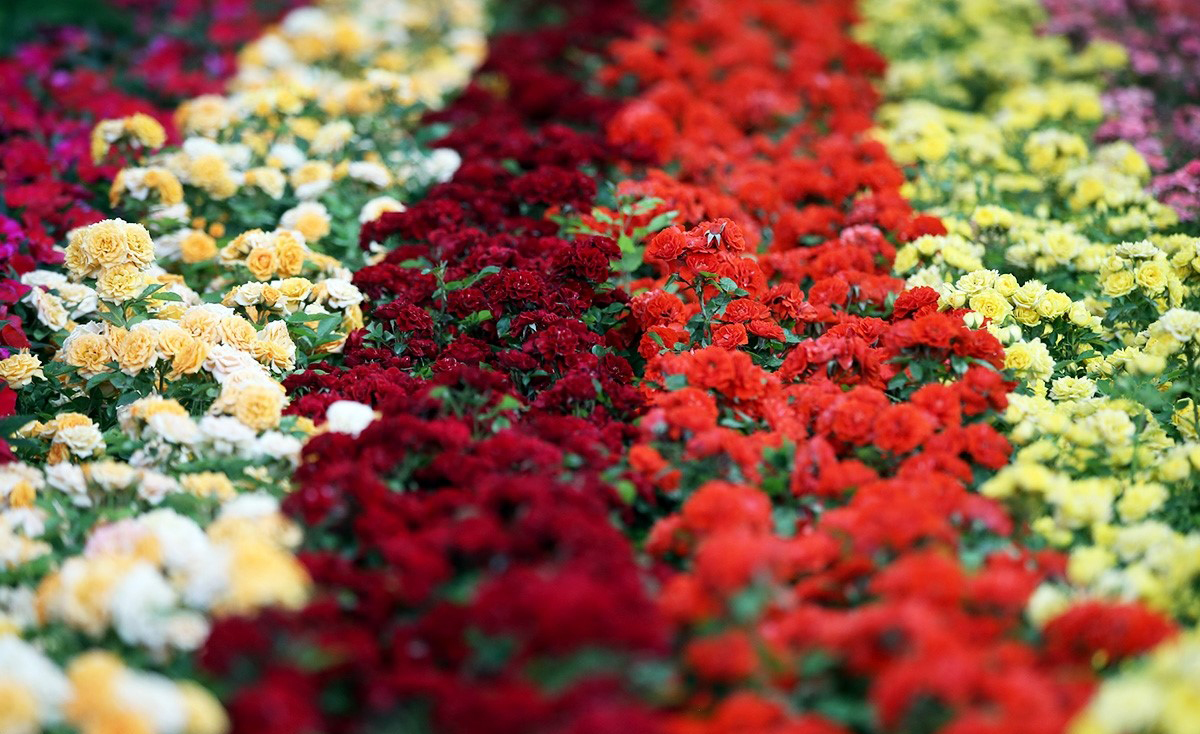For happy and sad occasions, flowers are a part of daily life in Iran, but Iranians have not been able to exploit the full potential of a global industry worth $104 billion a year.
For years, barriers to international trade have held Iranian businesses from blossoming.
Mehdi Kebriaie, who runs greenhouses in a town a few hours outside Tehran, says when international sanctions were lifted after the 2015 nuclear deal, things got better.
“One of the biggest challenges we face in Iran is a lack of modern technology,” he told Al Jazeera.
“Most of the [agricultural engineering] expertise exists in Europe and we haven’t been able to transfer that knowledge to Iran.”
But to be competitive in the international marketplace, Iranian growers will need more help.
Flowers are a hard sell compared with the global oil and gas industry, which is worth nearly $1.7 trillion a year. But in Iran, flowers can be a serious business, Kebreaie says, and that income from the agriculture sector could someday rival oil revenue.
“If I could meet the president, I would tell him to give agriculture and greenhouse production as much attention as the country gives to the oil industry,” he said.
“As much as we care about seats in [the international oil producers’ body] OPEC, I think we should pay even more attention to seats in the Food and Agriculture Organization, and pave the way for foreign investors in Iran.”
That said, exporting from Iran to international markets is still a challenge.
Akbar Shahrokhi, the head of the union of flower sellers, said the main problem now is the high cost of export.
“We cannot compete with main flower-exporting countries [like the Netherlands]. We don’t produce flowers in mass quantities. Since the production is low, it’s mostly for domestic consumption,” he said.
Even half of the flowers consumed domestically, go to waste: dying in transit or left unsold once they get to market.
“[In a meeting with President Hassan Rouhani] I asked him to help our producers with low-interest, long-term loans so they could modernize their greenhouses, because modernization is very expensive,” Shahrokhi said.
Those who are passionate about growing and selling flowers will say it is one of the best jobs in Iran and that investing in new technology and infrastructure to reach untapped markets will be money spent well.
According to an Iranian official with the Ministry of Agriculture, currently 6,500 hectares of land are under the cultivation of ornamental plants and flowers in Iran.
“The business has created 30,000 direct and around 90,000 indirect jobs across the country,” Gholamreza Taqavi told IRNA last month.
Per capita flower consumption in Iran is 18 stems compared to the global average of 150.
Deputy Agriculture Minister Mohammad Ali Tahmasebi says Iran exports about 7,000 tons of flowers, ornamental plants and herbal medicines annually, supplying close to 1% of the global markets.
Another ministry official, Mohammad Kiaei, says there were more than 10,000 hectares of greenhouses across the country as of last Iranian year (March 2016-17), close to 7,500 hectares of which were under the cultivation of vegetables. The rest were dedicated to flower farming. About 1.5 billion flower cuts were harvested in Iran last year.


